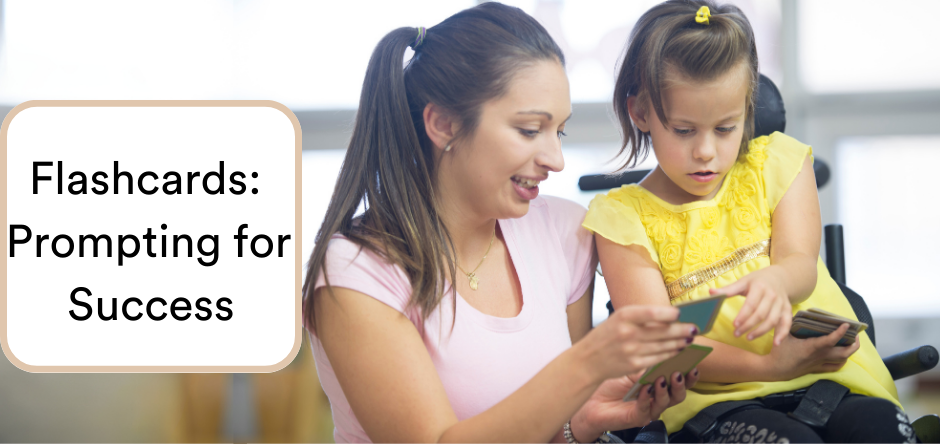
by Kate Connell, Owner of Picture My Picture
My own introduction to prompting and fading
I was first introduced to the idea of prompting and fading when I co-ordinated a home based early learning program for my eldest son, Christopher, who is on the autism spectrum. I soon came to appreciate how important these strategies were and are in supporting his learning. We are now into his teenage years and whilst the skills he is learning are far more complex compared with those early years, the use and importance of prompting and fading remains unchanged.
About prompting
A prompt is a cue (or hint) given to a student to encourage them to learn a new skill. There is extensive evidence to support my own experience that prompting is a highly effective way of teaching. An example of this evidence is noted at the end of this article.
Flashcards and prompting
A lot of the work we did around prompting with Christopher in the early years of his life related to the use of flashcards. We used them to expand his vocabulary, articulate words clearly and put together sentences. We also used them to build his academic skills in literacy and numeracy and his capacity for problem solving.
The different types of prompts
There are five different types of prompts and we used all of them in our flashcard based activities. These prompts are ranked accordingly to the level of support they offer, with 1 being the most supportive and five the least.
- Full physical
Example: I placed my hand over Christopher’s hand and guided him to place the flashcard he was holding over the associated one on the table – so the image of the sock was placed on top of the shoe, rather than on the image of the bed or the bowl - Partial physical
Example: I gently touched Christopher’s shoulder – to indicate it was time for him to respond to my request of naming the flashcard I was showing him. - Modelling
Example: I sorted the flashcards on the table into groups – animal, transport and instrument. I then shuffled the cards and asked Christopher to sort them in the same way - Gestural
Example: I nodded as he started to place the letter A next to the image of the apple. It provided him with the encouragement and confidence to continue with B and C. - Positional
Example: I placed two associated cards on the table next to one another so that Christopher could connect the two – so the picture of the fork was next to the picture of the person eating and the picture of the bed was next to the picture of the person sleeping
The goal is to select the type of prompt that is the least intrusive and results in the student providing the correct response. So, if a modelling prompt is not working then a partial or full physical prompt should be tried.
Why prompts need to be faded
Whilst prompts are a great teaching strategy, it is equally important that they be faded over time. You might ask why. The answer is so that the student doesn’t become dependent on the prompt. We were mindful of this in Christopher’s early learning program. There were instances where we started with a full hand over hand prompt. We then faded to a gestural prompt (by pointing at the flashcard) before omitting the prompt all together.
I like to think of prompting and fading as stepping stones on the way to independence with a new skill. Christopher and I have trod on those stones for a number of years now and going forward I know there will be more. I hope there will be more, As I’m so appreciative of the opportunities for learning they ultimately afford my son.
Citations
1 Hayes, D., (2013) The Use of Prompting as an Evidence Based Strategy to Support children with ASD in School Settings in New Zealand. ERIC 1-5
About The Author
Kate is the owner of Picture My Picture, an international business which specializes in educational flashcards. She is the mother of three boys, Christopher, Louis and Tom. Christopher is on the spectrum of Autism. The flashcard based teaching program she oversaw in the early years of his life was the inspiration for the business she owns today.
This article was originally posted on November 17, 2021 by Different Roads to Learning.
